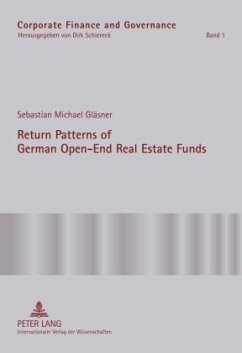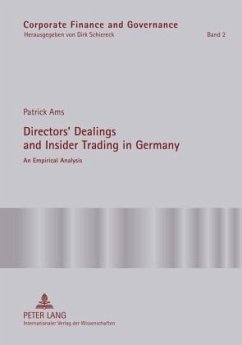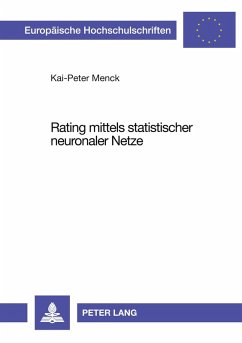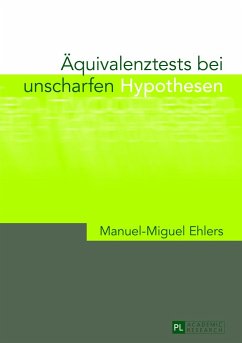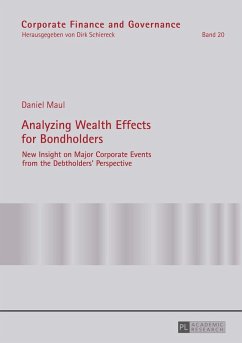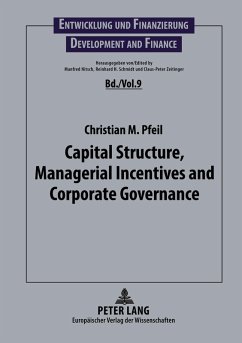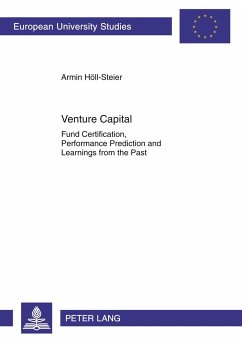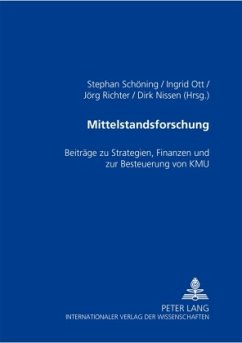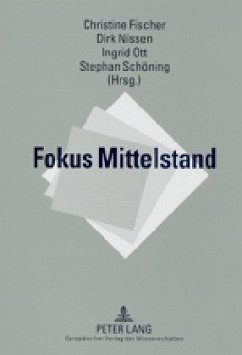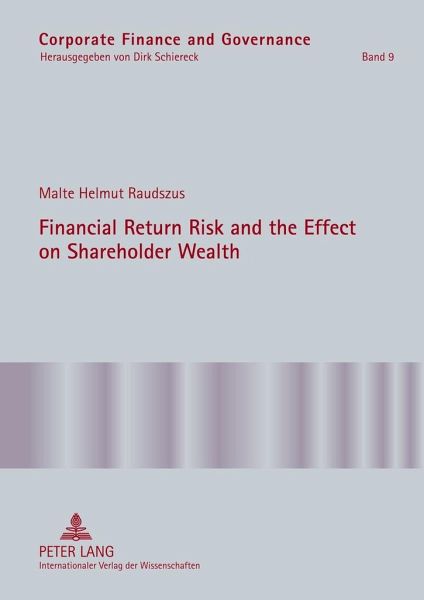
Financial Return Risk and the Effect on Shareholder Wealth
How M&A Announcements and Banking Crisis Events Affect Stock Mean Returns and Stock Return Risk- A Compendium of Five Empirical Studies across Selective Industries
Versandkostenfrei!
Versandfertig in 6-10 Tagen
68,95 €
inkl. MwSt.

PAYBACK Punkte
0 °P sammeln!
This dissertation comprises five studies analyzing daily stock returns of listed firms. Studies one and two shed light on corporate diversification through M&A and how related risk dynamics affect shareholder wealth. Carrying over the risk analysis methodology 'GARCH' to external events in studies three and four, the author individually scrutinizes the adverse implications of bank failures and bailouts in the 2007-2009 financial crisis. Finding opposing return shocks, he identifies the limits of the 'symmetric' GARCH. As observed of the behavior of stock return data, volatility reacts asymmetr...
This dissertation comprises five studies analyzing daily stock returns of listed firms. Studies one and two shed light on corporate diversification through M&A and how related risk dynamics affect shareholder wealth. Carrying over the risk analysis methodology 'GARCH' to external events in studies three and four, the author individually scrutinizes the adverse implications of bank failures and bailouts in the 2007-2009 financial crisis. Finding opposing return shocks, he identifies the limits of the 'symmetric' GARCH. As observed of the behavior of stock return data, volatility reacts asymmetrically to positive and negative return shocks. The advanced EGARCH incorporates this so called 'leverage effect'. Applying the EGARCH in his final study, the author can simultaneously scrutinize the adverse bank events with an appropriate econometric foundation.





